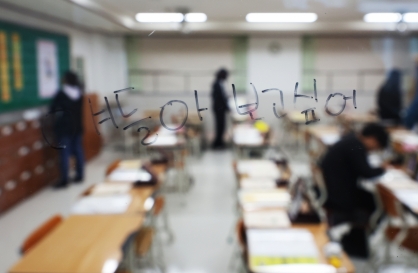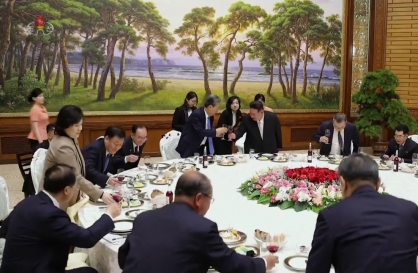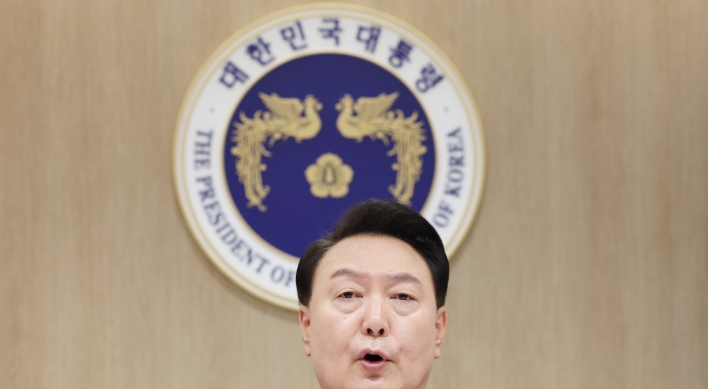The latest round of negotiations over Iran’s nuclear program took place last week, pitting the United States and its European partners against the Iranian regime’s Foreign Minister Mohammad Javad Zarif. But only five weeks before an upcoming deadline, there are serious outstanding questions about what a viable compromise would look like.
This was made clear in early October, when Supreme Leader Ayatollah Ali Khamenei’s website released an infographic reiterating 11 red lines that his negotiators will never be permitted to cross. Virtually all of these demands are unreasonably out of step with the goal of the nuclear talks, i.e., denying the Iranian regime the ability to build the bomb.
Ironically, Khamenei demands expansion to Iran’s current uranium enrichment capabilities. He is also seeking preservation of nuclear sites that are fortified against attack, as well as significant limits on the International Atomic Energy Agency inspections regime.
To sum up Khamenei’s position: Iran’s nuclear research and development will not be restrained in any way, shape, or form. This obviously contravenes the entire purpose of the nuclear negotiations and the optimistic Western assumptions about why Iran, under its new presidency, came to the negotiating table in the first place.
Over the past nine months of negotiating, Iran has shown no willingness to make compromises in order to achieve a deal. To the contrary, Tehran is actually more intransigent and more demanding, apparently believing that the crisis in Iraq and the economic effects of limited sanctions relief have given it enough leverage to insist upon significant concessions from the U.S.
Shockingly, the Obama administration has responded by keeping the doors open to several of those concessions. Last month, a proposal was introduced to allow Iran to keep most of its enrichment infrastructure but merely remove the piping connecting the machines. Tehran’s initial lukewarm response later turned into Khamenei’s outright rejection. Last week the U.S. reportedly proposed that Iran could keep its nuclear infrastructure only if it cut down stock of low-enriched uranium. Tehran, on the other hand, is proposing to replace its centrifuges with more advanced version.
Even more shocking, a number of commentators in the U.S. seem to be responding to the lack of progress by pushing for an agreement at any cost, on the assumption that a bad deal is still better than no deal at all.
The main argument in favor of signing such a deal is that it will at least preserve some IAEA access. But a bad deal doesn’t impede nuclear weapons work; it enables it. It may limit that work to secretive sites, such as SPND, as well as the Parchin military base, into which the IAEA has been repeatedly denied access. By rolling back sanctions and promoting European-Iranian relations, a bad deal will make it easier for Iran to obtain the financial resources and equipment needed to vigorously pursue that secretive research.
Earlier this month, the main Iranian opposition coalition, the National Council of Resistance of Iran, revealed that a Tehran facility that it first exposed in July 2011, and the West suspects is being used for nuclear weapons research has been moved by the regime to a new location. The research center, SPND, was referenced in a 2011 IAEA report and was placed under sanctions in August this year. The secretive relocation means that the nerve center of Tehran’s weaponization research is still fully operational, and that Tehran is intent on hiding and continuing this work.
Tehran’s troubling track record proves that if the Iranian regime and the United States are to reach a compromise before the November 24 deadline, it must be a genuine compromise, and not simply the acceptance of Iran’s terms for a deal.
So the question remains: what would a workable compromise look like? First and foremost, it must allow unhindered IAEA access to the country, not the “conventional” relationship with the U.N. agency, which Iran has always counted on as it pursued secret nuclear research and development.
It must also shatter the Iranian fantasy about unrestrained and rapidly expanding uranium enrichment. The U.S. has offered more than enough compromise on that point already. If the Iranian regime cannot agree to allay concerns about its nuclear program by taking concrete measures such as verifiably ending the ability to produce any fissile material, either enriched uranium or plutonium, and end its research and development on nuclear weaponization, then the deal has already been lost.
Self-delusion will not salvage that deal. If Tehran’s ruling mullahs aren’t willing to abandon their nuclear weapons program, then that is simply the reality on which the West must base its Iran policy, going forward.
By Alireza Jafarzadeh
Alireza Jafarzadeh of the Washington office of the National Council of Resistance of Iran is credited with exposing Iranian nuclear sites in Natanz and Arak in 2002, triggering International Atomic Energy Agency inspections. McClatchy-Tribune did not subsidize the writing of this column; the opinions are those of the writer and do not necessarily represent the views of McClatchy-Tribune or its editors. ― Ed.
(McClatchy-Tribune News Service)
(MCT Information Services)
This was made clear in early October, when Supreme Leader Ayatollah Ali Khamenei’s website released an infographic reiterating 11 red lines that his negotiators will never be permitted to cross. Virtually all of these demands are unreasonably out of step with the goal of the nuclear talks, i.e., denying the Iranian regime the ability to build the bomb.
Ironically, Khamenei demands expansion to Iran’s current uranium enrichment capabilities. He is also seeking preservation of nuclear sites that are fortified against attack, as well as significant limits on the International Atomic Energy Agency inspections regime.
To sum up Khamenei’s position: Iran’s nuclear research and development will not be restrained in any way, shape, or form. This obviously contravenes the entire purpose of the nuclear negotiations and the optimistic Western assumptions about why Iran, under its new presidency, came to the negotiating table in the first place.
Over the past nine months of negotiating, Iran has shown no willingness to make compromises in order to achieve a deal. To the contrary, Tehran is actually more intransigent and more demanding, apparently believing that the crisis in Iraq and the economic effects of limited sanctions relief have given it enough leverage to insist upon significant concessions from the U.S.
Shockingly, the Obama administration has responded by keeping the doors open to several of those concessions. Last month, a proposal was introduced to allow Iran to keep most of its enrichment infrastructure but merely remove the piping connecting the machines. Tehran’s initial lukewarm response later turned into Khamenei’s outright rejection. Last week the U.S. reportedly proposed that Iran could keep its nuclear infrastructure only if it cut down stock of low-enriched uranium. Tehran, on the other hand, is proposing to replace its centrifuges with more advanced version.
Even more shocking, a number of commentators in the U.S. seem to be responding to the lack of progress by pushing for an agreement at any cost, on the assumption that a bad deal is still better than no deal at all.
The main argument in favor of signing such a deal is that it will at least preserve some IAEA access. But a bad deal doesn’t impede nuclear weapons work; it enables it. It may limit that work to secretive sites, such as SPND, as well as the Parchin military base, into which the IAEA has been repeatedly denied access. By rolling back sanctions and promoting European-Iranian relations, a bad deal will make it easier for Iran to obtain the financial resources and equipment needed to vigorously pursue that secretive research.
Earlier this month, the main Iranian opposition coalition, the National Council of Resistance of Iran, revealed that a Tehran facility that it first exposed in July 2011, and the West suspects is being used for nuclear weapons research has been moved by the regime to a new location. The research center, SPND, was referenced in a 2011 IAEA report and was placed under sanctions in August this year. The secretive relocation means that the nerve center of Tehran’s weaponization research is still fully operational, and that Tehran is intent on hiding and continuing this work.
Tehran’s troubling track record proves that if the Iranian regime and the United States are to reach a compromise before the November 24 deadline, it must be a genuine compromise, and not simply the acceptance of Iran’s terms for a deal.
So the question remains: what would a workable compromise look like? First and foremost, it must allow unhindered IAEA access to the country, not the “conventional” relationship with the U.N. agency, which Iran has always counted on as it pursued secret nuclear research and development.
It must also shatter the Iranian fantasy about unrestrained and rapidly expanding uranium enrichment. The U.S. has offered more than enough compromise on that point already. If the Iranian regime cannot agree to allay concerns about its nuclear program by taking concrete measures such as verifiably ending the ability to produce any fissile material, either enriched uranium or plutonium, and end its research and development on nuclear weaponization, then the deal has already been lost.
Self-delusion will not salvage that deal. If Tehran’s ruling mullahs aren’t willing to abandon their nuclear weapons program, then that is simply the reality on which the West must base its Iran policy, going forward.
By Alireza Jafarzadeh
Alireza Jafarzadeh of the Washington office of the National Council of Resistance of Iran is credited with exposing Iranian nuclear sites in Natanz and Arak in 2002, triggering International Atomic Energy Agency inspections. McClatchy-Tribune did not subsidize the writing of this column; the opinions are those of the writer and do not necessarily represent the views of McClatchy-Tribune or its editors. ― Ed.
(McClatchy-Tribune News Service)
(MCT Information Services)
-
Articles by Korea Herald




















